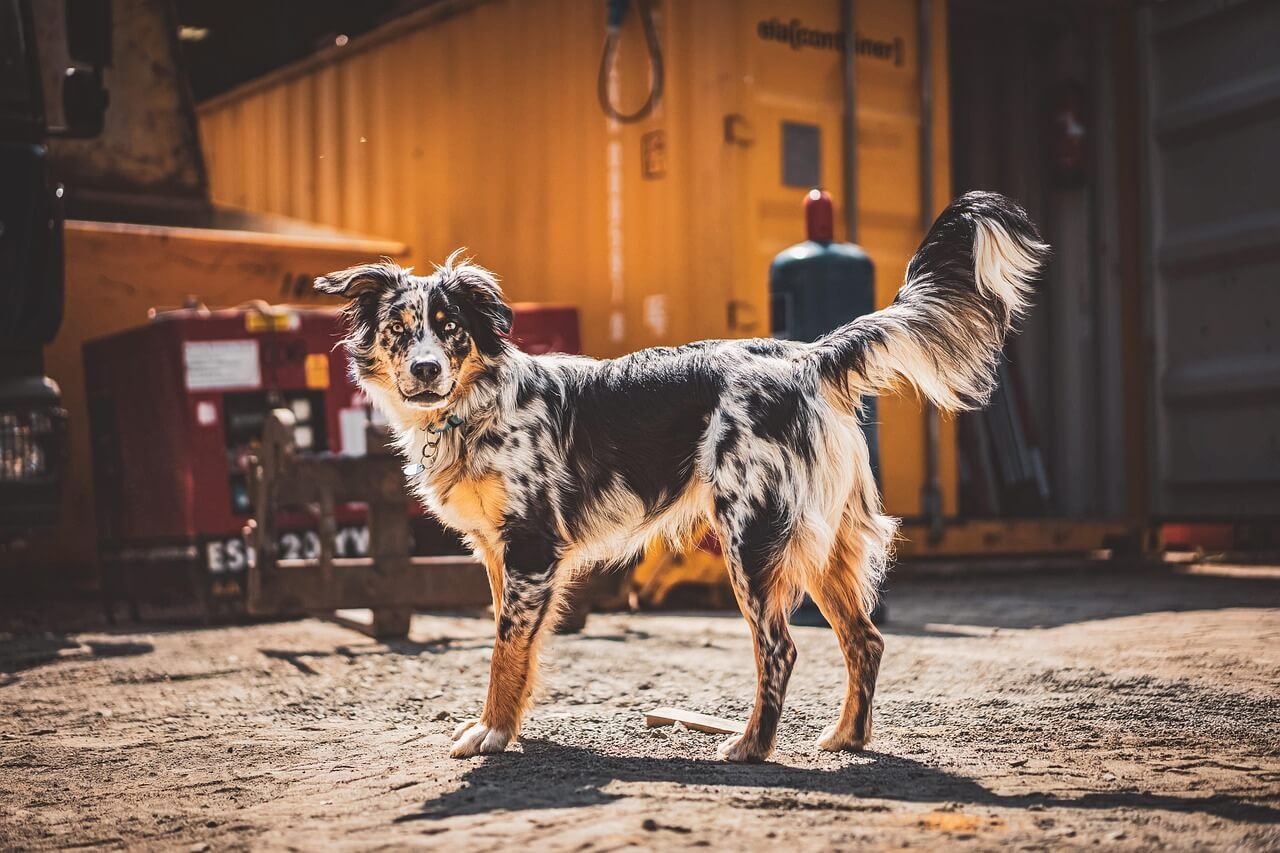Can Dogs Eat Apple Cores? What You Need to Know
Apples are a healthy, low-calorie snack that many dog owners love to share with their furry friends. Packed with vitamins, fiber, and antioxidants, apples can be a great treat for dogs when served correctly. But what about the apple core? Can dogs eat apple cores safely, or should they be avoided altogether? While the flesh of the apple is generally safe, the core poses some potential risks that every pet owner should understand. In this blog post, we’ll explore whether dogs can eat apple cores, highlight the dangers, and provide tips on how to serve apples safely. Let’s dive in and ensure your pup enjoys this tasty treat without any worries!
Potential Risks of Feeding Apple Cores to Dogs
While apples are a nutritious snack, the core of an apple can pose several risks to your dog’s health. Understanding these hazards will help you make informed decisions about feeding apples to your pet. Here’s what you need to know:
Choking Hazard
The tough, fibrous texture of apple cores can become lodged in your dog’s throat, especially in smaller breeds.Cyanide Risk from Seeds
Apple seeds contain amygdalin, which releases cyanide when chewed or digested in large quantities.Digestive Blockage
If swallowed whole or in large chunks, apple cores can cause intestinal blockages, leading to serious health issues.Difficulty Digesting
The dense structure of apple cores can be hard for dogs to break down, potentially causing stomach upset.Tooth Damage
Chewing on hard apple cores may lead to cracked or damaged teeth, particularly in dogs with dental issues.
These risks highlight why it’s best to avoid giving apple cores to your dog altogether. Instead, focus on safer ways to incorporate apples into their diet.
Safe Ways to Feed Apples to Your Dog
If you want to share apples with your dog, there are plenty of safe and delicious ways to do so. By preparing apples properly, you can minimize risks while maximizing the nutritional benefits. Here’s how to serve apples safely:
Remove the Core and Seeds
Always cut out the core and seeds before offering apple slices to your dog.Cut into Small Pieces
Slice the apple into bite-sized pieces to prevent choking and make it easier to chew.Limit Portion Sizes
Offer apples in moderation to avoid excessive sugar intake, which can upset your dog’s stomach.Choose Organic Apples
Opt for organic apples to reduce exposure to pesticides and chemicals.Freeze for a Cool Treat
Freeze apple slices for a refreshing snack, especially during hot summer months.
By following these guidelines, you can ensure your dog enjoys apples as a healthy and safe treat. Preparation is key to preventing any potential problems.
Check this guide 👉Can Dogs Eat Edamame? Best 7 Expert Tips!
Check this guide 👉Can Dogs Eat Cantaloupe? Best 7 Expert Tips!
Check this guide 👉Can Dogs Eat Turkey? Best 7 Health Tips!

Benefits of Feeding Apples to Dogs | Risks of Feeding Apples Improperly |
|---|---|
Rich in fiber for better digestion | Choking hazard from apple cores |
Low in calories for weight management | Cyanide risk from apple seeds |
Packed with vitamin C for immunity | Potential digestive blockages |
Hydrating due to high water content | Tooth damage from chewing cores |
Natural sweetness dogs enjoy | Stomach upset from overfeeding |
Signs Your Dog May Have Eaten Something Harmful
If your dog accidentally eats an apple core or consumes too much of the fruit, it’s important to watch for signs of distress. Here are some symptoms that may indicate your dog has ingested something harmful:
Vomiting or Diarrhea
These are common signs of gastrointestinal upset caused by indigestible parts of the apple.Excessive Drooling
Drooling can indicate irritation or discomfort in your dog’s mouth or throat.Lethargy or Weakness
A sudden lack of energy may suggest poisoning or blockages in the digestive tract.Pawing at the Mouth
This behavior could mean your dog is trying to dislodge something stuck in their throat.Loss of Appetite
Refusing food or water may signal pain or discomfort in the stomach or intestines.
If you notice any of these symptoms, contact your veterinarian immediately. Quick action can prevent complications and ensure your dog stays healthy.
Alternative Healthy Snacks for Dogs
If you’re looking for other safe and nutritious snacks to share with your dog, there are plenty of options beyond apples. Here are some alternatives that are both tasty and beneficial for your pup:
Blueberries
These small, antioxidant-rich berries are perfect for training treats or snacks.Carrot Sticks
Crunchy and low in calories, carrots are great for dental health and satisfying your dog’s chewing urge.Peanut Butter (Xylitol-Free)
A spoonful of peanut butter can be a delightful treat, but always check for xylitol, which is toxic to dogs.Plain Yogurt
Yogurt is a good source of probiotics, promoting healthy digestion and gut bacteria.Green Beans
Steamed or raw green beans are a low-calorie, fiber-rich option for dogs watching their weight.
These alternatives provide variety and nutrition without the risks associated with apple cores. Experiment with different snacks to find what your dog loves most!
How to Prepare Apples for Your Dog Safely
Preparing apples properly is essential to ensure your dog enjoys this snack without any risks. Here are some simple steps to follow when offering apples to your pup:
Wash the Apple Thoroughly
Rinse the apple under running water to remove dirt, pesticides, or chemical residues from the skin.Peel the Skin (Optional)
While the skin is safe for most dogs, peeling it can reduce the risk of digestive upset, especially for sensitive pups.Remove the Core Completely
Cut out the entire core, including the seeds, to eliminate choking hazards and cyanide risks.Slice into Bite-Sized Pieces
Smaller pieces are easier for dogs to chew and digest, minimizing the chance of blockages.Monitor Portion Sizes
Limit the amount of apple you offer based on your dog’s size and dietary needs to avoid overfeeding.
By taking these precautions, you can safely include apples in your dog’s diet while avoiding potential dangers. A little preparation goes a long way in keeping your pet healthy and happy.
Signs Your Dog Loves Apples (and Other Fruits)
If your dog enjoys apples or other fruits, their behavior will give you clear clues about their preferences. Here are some signs that your pup has a sweet tooth for these healthy snacks:
Excited Wagging When You Bring Out Apples
Dogs often wag their tails or perk up when they see or smell their favorite treats.Eagerly Devouring Apple Slices
If your dog gobbles up apple slices quickly, it’s a good sign they love the taste.Begging for More After Finishing
Pups who enjoy apples may nudge you or bark for another piece after finishing their snack.Choosing Apples Over Other Treats
Some dogs will consistently pick apples over other snacks if given the choice.Playful Behavior During Snack Time
Happy barking, jumping, or playful antics while eating apples indicate pure enjoyment.
These behaviors show that your dog not only tolerates apples but genuinely enjoys them. Sharing safe, healthy snacks like apples strengthens your bond and adds joy to their day.
Common Mistakes to Avoid When Feeding Apples to Dogs
Even well-meaning pet owners can make mistakes when feeding apples to their dogs. Avoiding these common errors ensures your dog stays safe and healthy. Here’s what to watch out for:
Feeding Whole Apples
Offering an entire apple increases the risk of choking or digestive blockages.Leaving Seeds in the Apple
Forgetting to remove seeds exposes your dog to small amounts of cyanide, which can be harmful over time.Overfeeding Sugary Fruit
Too many apples can lead to stomach upset or contribute to unhealthy weight gain.Ignoring Allergies or Sensitivities
Some dogs may have sensitivities to certain fruits, so always introduce new foods gradually.Assuming All Parts Are Safe
Many owners mistakenly believe the core or stems are harmless, but these parts pose real risks.
By steering clear of these mistakes, you can ensure your dog enjoys apples as a safe and nutritious treat. Awareness and care are key to preventing accidents or health issues.
FAQ
Can dogs eat apple cores?
No, apple cores should be avoided due to choking hazards, cyanide risks from seeds, and potential digestive blockages.
Are apple seeds toxic to dogs?
Yes, apple seeds contain amygdalin, which releases cyanide when chewed or digested in large amounts.
How much apple can I feed my dog?
Offer apples in moderation—small slices or chunks a few times a week are sufficient to avoid excessive sugar intake.
Can puppies eat apples?
Yes, puppies can eat apples, but only in small, seed-free, and core-free portions to prevent choking or digestive issues.
What should I do if my dog eats an apple core?
Monitor your dog for symptoms like vomiting, lethargy, or difficulty breathing, and contact your vet if you notice any concerning signs.
Enjoy Apples Safely with Your Dog
Apples can be a wonderful addition to your dog’s diet when served responsibly. By removing the core and seeds, cutting the fruit into manageable pieces, and offering it in moderation, you can provide a healthy and enjoyable snack for your furry friend. Remember, preparation is key to ensuring your dog’s safety and well-being. With these tips in mind, you can confidently share apples—or other safe treats—with your pup, knowing they’re getting the best care possible. So go ahead, slice up an apple, and bond with your dog over this sweet, crunchy delight!
Canned Pumpkin for Cat Diarrhea: Best 7 Expert Tips! Natural remedy to firm stools, soothe upset bellies, and support gut health safely.
Can a Cat Give You Scabies? Best 7 Expert Tips! Discover the truth about feline mites, human skin risks, and how to protect yourself—without panic.
Cat Flea vs Human Flea: Best 7 Expert Tips! Discover the truth about bites, species, and how to eliminate infestations for good.
Weird Cat Behaviors: Best 7 Expert Tips! Discover why cats do strange things—and how to understand, not punish, their instincts for a happier home.





